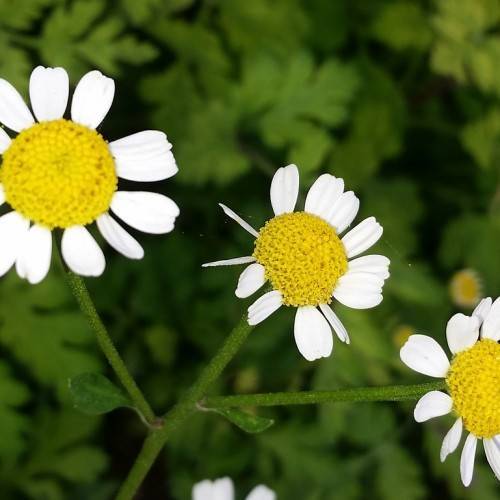
feverfew
Tanacetum parthenium
Cycle:
Herbaceous Perennial
Watering:
Average
Hardiness Zone:
5 - 8
Flowers:
Flowers
Sun:
Full sun
Fruits:
Fruits In Autumn Ready In Fall
Leaf:
Yes
Growth Rate:
High
Maintenance:
Moderate
Care Level:
Medium
watering
Feverfew should be watered thoroughly and deeply each week during the growing season. During the summer months, water the plant every 4-7 days, depending on soil moisture and temperature. In early spring and late fall, water the plant once a week, or every 10-14 days. In winter, when the plant is dormant, water it about once a month. It is important to note that the soil around Feverfew must be kept moist, but not soggy. Be sure the soil can drain well and always check the soil before watering. If the top layer of soil feels slightly damp, don’t need to water.
sunlight
Feverfew (Tanacetum parthenium) prefers bright, direct sunlight for optimal growth. It will do well in full sun, which means at least 6 to 8 hours of sunlight per day. However, if the plant is grown in an area with intense heat, some afternoon shade may be beneficial to protect it from sunburn. If the plant is grown in a cooler region, full sun with only a few hours of shade in the hottest part of the day should suffice. In general, morning sun is generally preferable to afternoon sun as the heat is usually more intense in the afternoon. Feverfew can handle intense light, so the occasional light shade throughout the day shouldn’t do it any harm. It's worth noting that the more sunlight a Feverfew plant gets, the more vibrant its yellow flowers will be.
pruning
Feverfew (Tanacetum parthenium) should be pruned annually in early spring. Cut back any winter-damaged stems to the base to promote strong, healthy new growth and help reduce the spread of any disease. Pinch off faded flowers to encourage new blooms. Deadhead any diseased or wilting blossoms and thin out any overgrown stems or shoots if needed to keep the shape and size of the plant in check. Overall, aim to prune as little as possible by only trimming away the dead and diseased material. This will ensure a lush and healthy plant.
